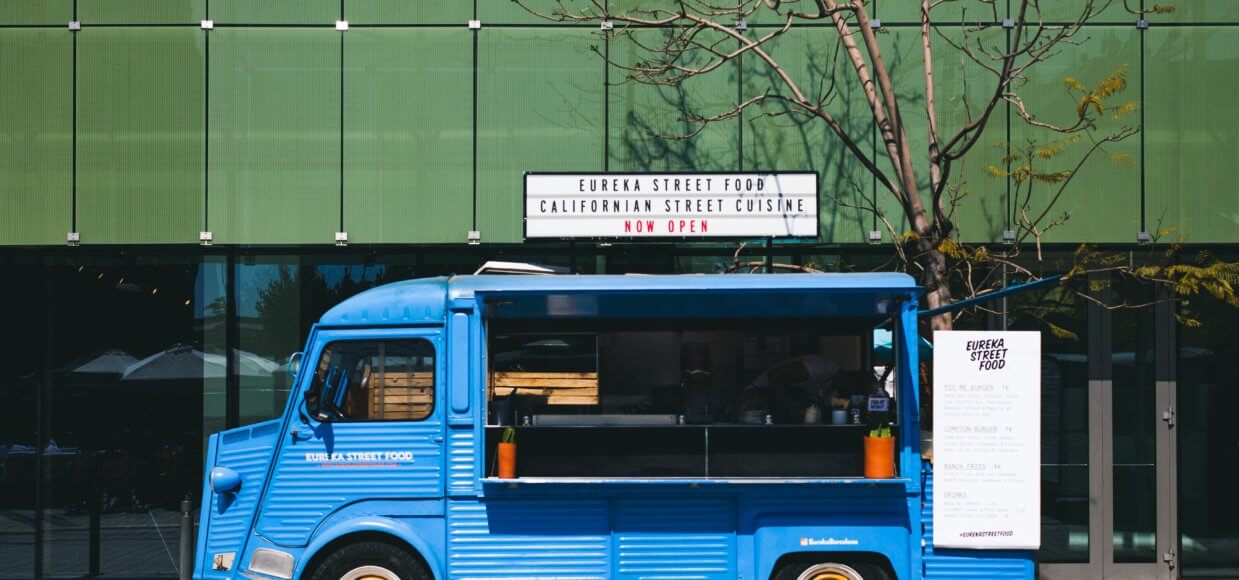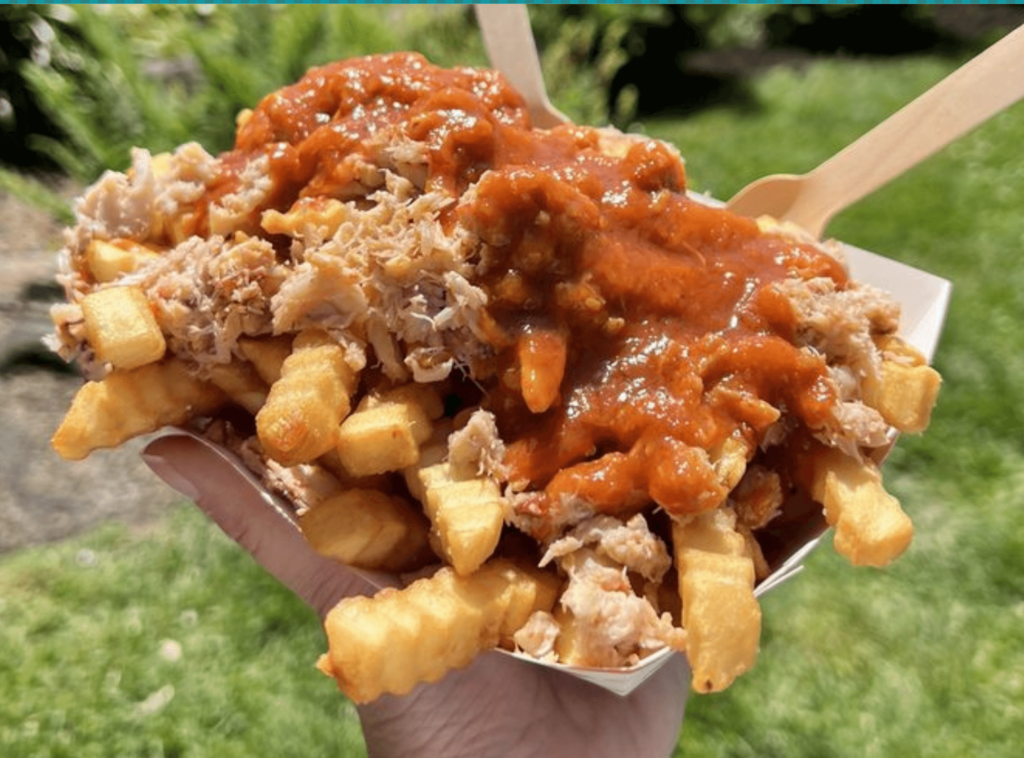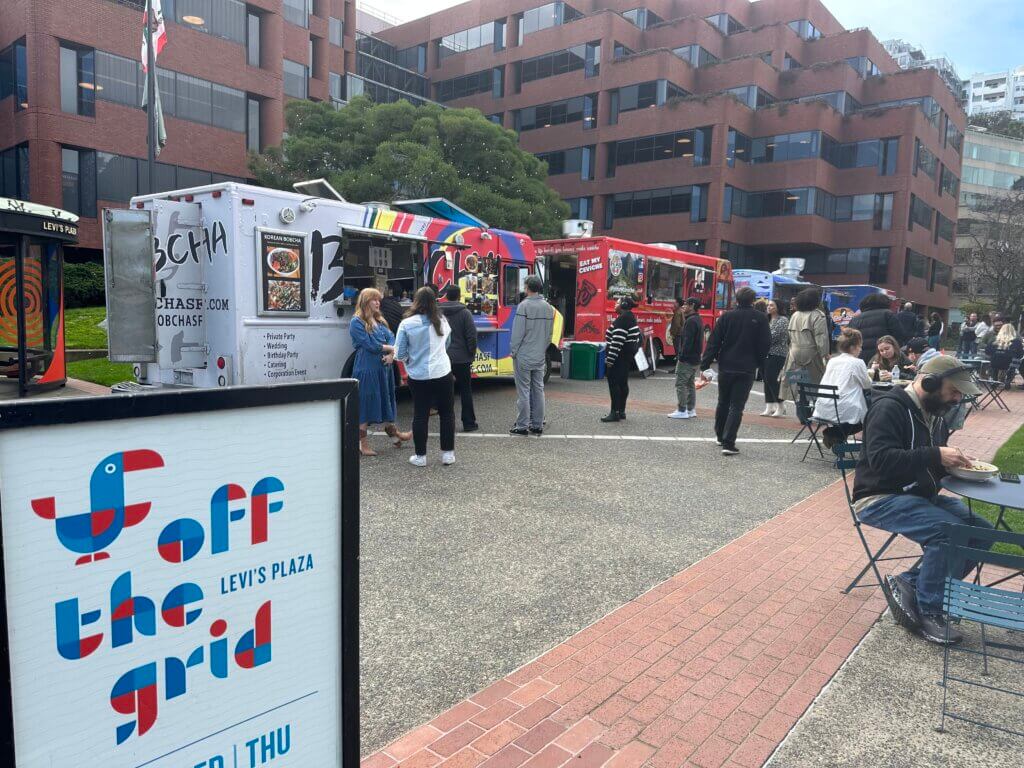
If you’re hoping to open a food truck soon—or have already launched and are looking to grow your customer base—this one’s for you.
Like with any start-up, it takes a little more legwork to become a successful business than just writing a brilliant idea on a napkin and turning that concept into a reality tomorrow. Many of the Bay Area’s top brick-and-mortar restaurants spent years as pop-ups, side projects, or ideas deep in the imagination of talented chefs to become real dining experiences.
Many successful food businesses also spend their opening years in one form, only to pivot later to increase revenue and attract a larger audience. It surely isn’t a straightforward industry with a settled path towards success. But, it really is a special part of the food and drink world. If you want to share your cooking with the world, you should!
While there’s no secret sauce to success, there are tried and true ways to get there.
It goes without saying that if you’re an aspiring food business — mobile or stationary — the food should be delicious. In a competitive food truck and restaurant market like the Bay Area, savvy diners recognize this as much as they recognize Alcatraz and Coit Tower. They don’t want to eat at marketing first places.
Patience, teamwork, and beautiful cooking with high quality ingredients are the grand ways for a food truck liftoff. Then there’s the duo of branding and social media that are so important to a food truck’s success.
Look around at some of Off the Grid’s longtime creators—what do you notice? They have powerful branding and an equally notable social media presence. Their trucks have logos that are artistic and memorable. Their name and signature dishes/cuisine stand out in the crowd. Their Instagram feeds make you want to put away the work computer and go find their truck for lunch now. Their Facebook and Twitter feeds provide useful, detailed information about location, hours and specials. In brief, they focus on the details before, during and after your meal visit.
Beyond those big picture ideas for food trucks, here are some smaller, quieter ways to put your foot on the accelerator and make your mobile food concept one of the marquee names in Bay Area dining.
Here are 10 things you can do today to maximize sales.
1. Learn the Art of the Menu
Don’t make customers stand in front of the menu for five minutes navigating all the different ordering choices. Keep it compact and concise! Diners have to make all kinds of non-food related decisions during their busy days, so having a dozen kinds of sandwiches will make them feel dizzy and frustrated. Focus on a few core dishes that stand out from the crowd and run with it. This will always attract newcomers drawn to your signature dish(es) and keep regulars coming back once they’ve fallen in love with that signature. And, let’s be honest, food trucks don’t exactly have lots of square footage to supply the food for a large menu anyways.
2. Have Special Specials
Like #1, but very different. Many of Off the Grid’s top food trucks strike an excellent balance of always serving their signature items and then rotating in some rare, compelling specials. Specials and social media are quite the happy couple. When potential customers are browsing your Instagram feed and they stumble upon an incredible dish that is Thursday at Levi’s Plaza only, then chances are exorbitantly higher that they might make a sudden change of plans to come visit your truck when they may have waited a few more days or weeks. Specials are special when the dish and the time are right.
3. Focus on Non-Food Details
Permits and truck upkeep—they’re the parts of running a food truck that draw yawns and screams. However, as much fun as it is to focus on branding and food, it’s vital to not lose sight of the bureaucracy and maintenance that’s involved with running a food truck. Make sure your truck can make it to wherever it’s supposed to go and to function when it gets there. Nobody likes seeing a food truck miss a reserved outing because of a missing permit or a flat tire. This is the pain point for too many great food trucks. Remember the truck part of “food truck.”
4. Create Atmosphere
Lights, music, decorations! Sure, a food truck isn’t a dining room but think about what makes the great local restaurant designs and vibes work. Little touches like music and decorations add to the fun of a food truck gathering — and of course they catch the attention of prospective customers who are considering which truck to visit. This point comes with a big asterisk, though — don’t be too loud and distracting that it seems annoying or, even worse, frustrates your food truck peers. There is definitely a fine line between having a unique, fun atmosphere, and just being over the top. You’ll know it when you veer towards the latter.
5. Focus on Guest Experience
Keep in mind how guests of your food truck will be eating your food. Is it easy to eat bouillabaisse without a table? No. Your menu should be mostly or entirely portable-friendly. That doesn’t have to mean all sandwiches, all the time! But please do keep in mind how difficult and/or messy dishes are for customers to eat…because they’ll remember if the meal was more frustrating than delicious. Try to be ahead of the curve and think about this ahead of time.
6. Keep an Eye on Analytics
Ok, so one of your longtime family recipes has always been on the menu but rarely gets ordered…what do you do? There isn’t necessarily a right or wrong answer to that, but the key learning lesson of dishes that don’t sell well is to try to not be a stubborn, obstinate chef who thinks the customers just don’t get it. Revenue comes from sales and sometimes, as tough as it can be, it tremendously helps the bottom line to slide away dishes that just aren’t that popular. Or, perhaps your analytics shows that certain dishes are more popular at lunch in Alameda than evenings at Fort Mason Center. It’s important to be confident and to take a few chances, but the reality also is that real financial numbers don’t lie. Tough love can be tough for a food truck menu.
7. Be Transparent About Ingredients and Cooking
Besides the Giants and 49ers, Bay Area residents seem to be most fanatical about the ingredients they cook with and what they eat. The more that you share about what you’re cooking your dishes with and how you’re cooking those items, the better. This could come via behind-the-scenes Instagram stories or designing your truck so customers can see some of the food prep area — there are an assortment of ways to share your food transparency. As much as “farm-to-table” has become ubiquitous for pretty much any restaurant nowadays, it does still have enormous value with Bay Area diners.
8. Know Your Audience
Are you serving doughnut grilled cheese sandwiches to Symphony goers? It might be a hit…but also might not. Make sure you consider ahead of time who your customers might be and what they might be tempted to order. Again, there is certainly no “one size fits all” for cuisines and genres. But it sure is helpful to be mindful of your audience.
9. Create Loyalty Programs
Who doesn’t love a free lunch or a free coffee? Loyalty programs exist for a reason! Everybody loves to feel appreciated. There are hundreds of food trucks out there and your regulars decided to make you one of their frequent stops. Thanking them for that will keep them coming back. And when they get that free item, guess what? You’ll see them eagerly return next week to start up that quest towards another free item. One catch…Don’t go overboard with freebies or prizes or gimmicks to get fantastic reviews from online and social media reviewers or influencers. They’re fine from time to time. Yet Bay Area diners will notice these patterns (they will!), and skeptically wonder, hmm, “Why are they always offering a ‘buy one, get one free package?’”
10. Don’t Forget the “Front of Truck”
The hospitality industry is hard. Customers can be demanding and impatient. Problems happen. The kitchen can get in the weeds. We get it! This is a tough, tough industry (and that’s why patience and teamwork are so, so, so important!). As much as guests will focus on food, they’ll also remember their interactions with ordering and pickup. Was there a smile? Did the exchanges seem upbeat and did the process seem organized? Just like for brick-and-mortar restaurants, these little “front of house” details for a food truck often are the deciding factors for a customer deciding to return or not.
By Trevor Felch
Are you a food truck or food vendor interested in joining the Off the Grid network? Click here to learn more and apply for food truck market and corporate catering opportunities! We look forward to hearing from you.



